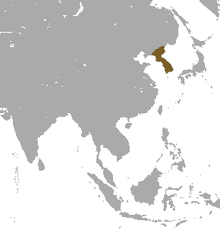
Hares and jackrabbits are leporids belonging to the genus Lepus. Hares are classified in the same family as rabbits. They are similar in size to rabbits and have similar herbivorous diets, but generally have longer ears and live solitarily or in pairs. They do not dig burrows, but nest in slight depressions called forms, often in long grass. Also unlike rabbits, their young are able to fend for themselves shortly after birth rather than emerging blind and helpless. Most are fast runners. Hare species are native to Africa, Eurasia, and North America.

Leporidae is the family of rabbits and hares, containing over 60 species of extant mammals in all. The Latin word Leporidae means "those that resemble lepus" (hare). Together with the pikas, the Leporidae constitute the mammalian order Lagomorpha. Leporidae differ from pikas in that they have short, furry tails and elongated ears and hind legs.

The mountain hare, also known as blue hare, tundra hare, variable hare, white hare, snow hare, alpine hare, and Irish hare, is a Palearctic hare that is largely adapted to polar and mountainous habitats.

The European hare, also known as the brown hare, is a species of hare native to Europe and parts of Asia. It is among the largest hare species and is adapted to temperate, open country. Hares are herbivorous and feed mainly on grasses and herbs, supplementing these with twigs, buds, bark and field crops, particularly in winter. Their natural predators include large birds of prey, canids and felids. They rely on high-speed endurance running to escape predation, having long, powerful limbs and large nostrils.

The white-tailed jackrabbit, also known as the prairie hare and the white jack, is a species of hare found in western North America. Like all hares and rabbits, it is a member of the family Leporidae of order Lagomorpha. It is a solitary individual except where several males court a female in the breeding season. Litters of four to five young are born in a form, a shallow depression in the ground, hidden among vegetation. This jackrabbit has two described subspecies: L. townsendii townsendii occurring west of the Rocky Mountains and L. townsendii campanius occurring east of the Rocky Mountains.

The Japanese hare is a species of hare endemic to Japan. In Japanese, it is called the Nousagi, meaning "field rabbit".

The broom hare is a species of hare endemic to northern Spain.

The Indian hare, also known as the black-naped hare, is a common species of hare native to the Indian subcontinent, and Java.
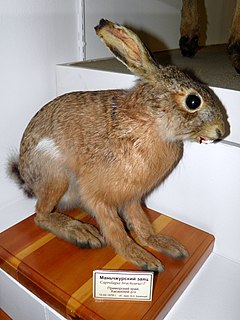
The Manchurian hare is a species of hare found in northeastern China and Russia, the Amur River basin, and the higher mountains of northern North Korea. It lives in forests and the IUCN has assessed its conservation status as being of "least concern".
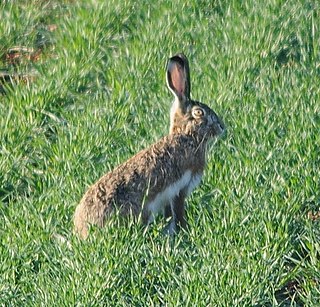
The Granada hare, also known as the Iberian hare, is a hare species that can be found on the Iberian Peninsula and on the island of Majorca.

The Yunnan hare is a medium-sized species of mammal in the family Leporidae. It has soft, flat, and long dorsal pelage which is grayish brown or dark gray in color, and whitish ventral pelage. It was considered endemic to China, but its presence was recorded in northern Myanmar in 2000. It is a herbivore, and forages on shrubs and forbs. It is rated as a species of least concern on the International Union for Conservation of Nature Red List of Endangered Species. The Red List of China's Vertebrates has listed the Yunnan hare as near threatened, almost meeting the criteria to be listed as vulnerable.
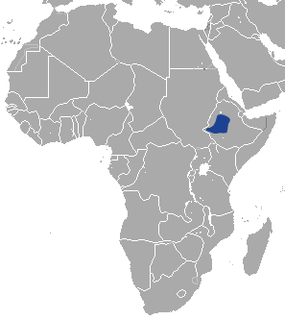
The Ethiopian hare is a species of mammal in the family Leporidae. It was first described in 1903, by the British mammalogist Oldfield Thomas. The dorsal pelage is brownish buff, and is finely grizzled with black. The ventral pelage is fluffy and white in colour. Endemic to Ethiopia, it is found in the Afromontane Biozone of Ethiopia, and in the borders of the Sudanian Savanna Biozone. It is rated as a least concern species by the International Union for Conservation of Nature.

The Burmese hare is a species of mammal in the family Leporidae. It is found in Cambodia, Laos, Myanmar, Thailand, and Vietnam.

The Chinese hare is a species of mammal in the family Leporidae. It is found in China, Taiwan and Vietnam.

The Ethiopian highland hare is a medium-sized species of mammal in the rabbit and hare family, Leporidae. Its dorsal pelage is grizzled, buff white and spotted and streaked with black, while its belly fur is pure white and fluffy. It is endemic to the Ethiopian Highlands, ranging over the Afroalpine regions of the Shoa, Bale, and Arsi Provinces of Ethiopia. A herbivore, it mostly feeds on moorland grasses. The IUCN rates it as a species of least concern.
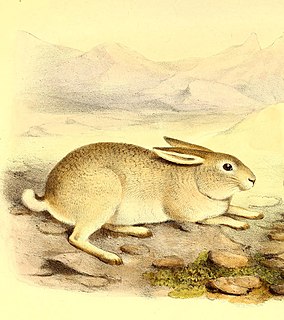
The Yarkand hare is a species of mammal in the family Leporidae. It has soft, straight, sandy brown dorsal pelage which has grayish-black stripes, and completely white ventral pelage. Endemic to China, the Yarkand hare is restricted to the Tarim Basin in Southern Xinjiang, China. It is mainly nocturnal, and forages on grass and crops. The female produces two or three litters annually, each consisting of two to five young. It is rated as near threatened on the International Union for Conservation of Nature Red List of Endangered Species and by the Red List of China's Vertebrates. However, Chinese geneticists have stated the species is "endangered" due to limited habitat and its fragmentation, and over-hunting and poaching.

Smith's red rockhare, Smith's red rock hare or Smith's red rock rabbit is a species of mammal in the family Leporidae, and is the smallest member of the genus Pronolagus. The upperparts and gular collar are reddish brown in colour. It has warm, brown, grizzled, thicker hairs at the back of the body, and white to tawny, thinner underfur. It is native to Africa, found in parts of Kenya, Lesotho, Malawi, Namibia, South Africa, Tanzania, Zambia and Zimbabwe. It is a folivore, and usually forages on grasses, shrubs and herbs. It breeds from September to February, and the female litters one or two offspring. The young leave the nest at three years of age. In 1996, it was rated as a species of least concern on the IUCN Red List of Endangered Species.

The black-tailed jackrabbit, also known as the American desert hare, is a common hare of the western United States and Mexico, where it is found at elevations from sea level up to 10,000 ft (3,000 m). Reaching a length around 2 ft (61 cm), and a weight from 3 to 6 lb, the black-tailed jackrabbit is one of the largest North American hares. Black-tailed jackrabbits occupy mixed shrub-grassland terrains. Their breeding depends on the location; it typically peaks in spring, but may continue all year round in warm climates. Young are born fully furred with eyes open; they are well camouflaged and are mobile within minutes of birth, thus females do not protect or even stay with the young except during nursing. The average litter size is around four, but may be as low as two and as high as seven in warm regions.

The Corsican hare, also known as the Apennine hare or Italian hare, is a species of hare found in southern and central Italy and Corsica.

